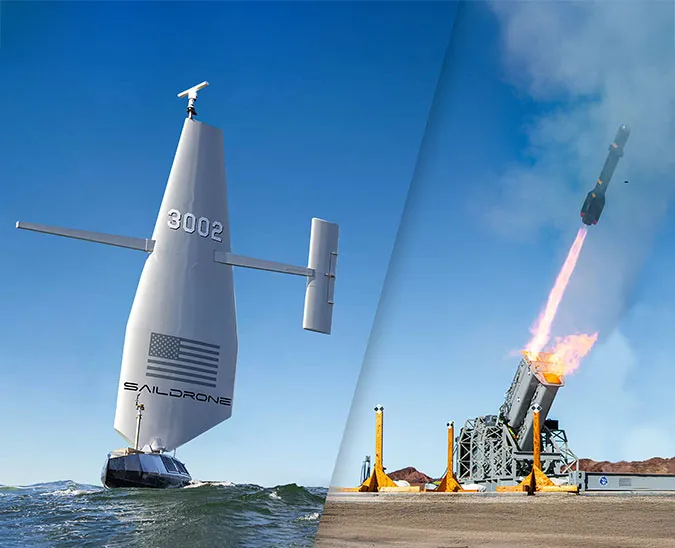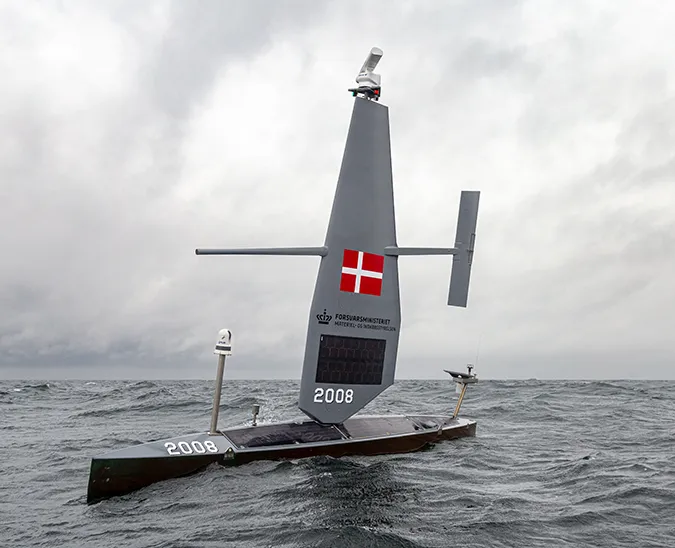Published on
Author
Saildrone was proud to welcome members of the House Armed Services Committee (HASC) members and invited guests for a tour of our Alameda, CA, manufacturing facility. During the visit, Saildrone CEO Richard Jenkins highlighted the need for the Navy to organically budget for ocean mapping and intelligence, surveillance, and reconnaissance (ISR) from uncrewed platforms. The group got an up-close look at the 20-meter (65-foot) Saildrone Surveyor and 10-meter (33-foot) Voyager uncrewed surface vehicles.
Earlier in the day, Jenkins offered testimony before the HASC in a session titled “Fielding Technology and Innovation: Industry Views on Department of Defense Acquisition,” held at the UC Santa Cruz Silicon Valley Campus.

Jenkins was joined by Peter Ludwig of Applied Intuition, Shyam Sankar of Palantir, Brandon Tseng of Shield AI, and Mark Valentine of Skydio to discuss how the DOD can enable rapid adoption of new capabilities, provide a pathway for successful prototypes to scale, and allow the services the flexibility to take advantage of emerging technologies.
The commercial sector is developing and providing cost-efficient, alternative technologies to transform the battlefield. These are not futuristic concepts or theoretical warfighting strategies—they are tangible, field-ready solutions available now.

“The current POM process requires funds to be requested, multiple years in advance of the money being spent. This creates a multi-year gap between innovative solutions being validated, to when they can be deployed at scale. The classic ‘valley of death’ paradigm,” said Jenkins in his testimony.
The Defense Innovation Unit (DIU) has greatly increased the Department of Defense’s ability to rapidly find and field commercial technologies but currently, the services adopt the technology through their budgeting process, which is set two years ahead. Congress should create an ability to immediately scale those solutions that are deemed effective ahead of dedicated appropriations arriving years later.

“The DOD spends over $50 Billion on research and development but almost nothing on integration into operations. It’s like a private company designing a new product, but with no money or effort spent on the go-to-market strategy,” said Jenkins.
Jenkins asked the committee to consider creating a dedicated “bridge fund” within a service’s budget to fund the immediate roll-out of new technologies that are already proven effective through existing programs, have adequate demand signals, and are being included in the service’s future budget submissions.






